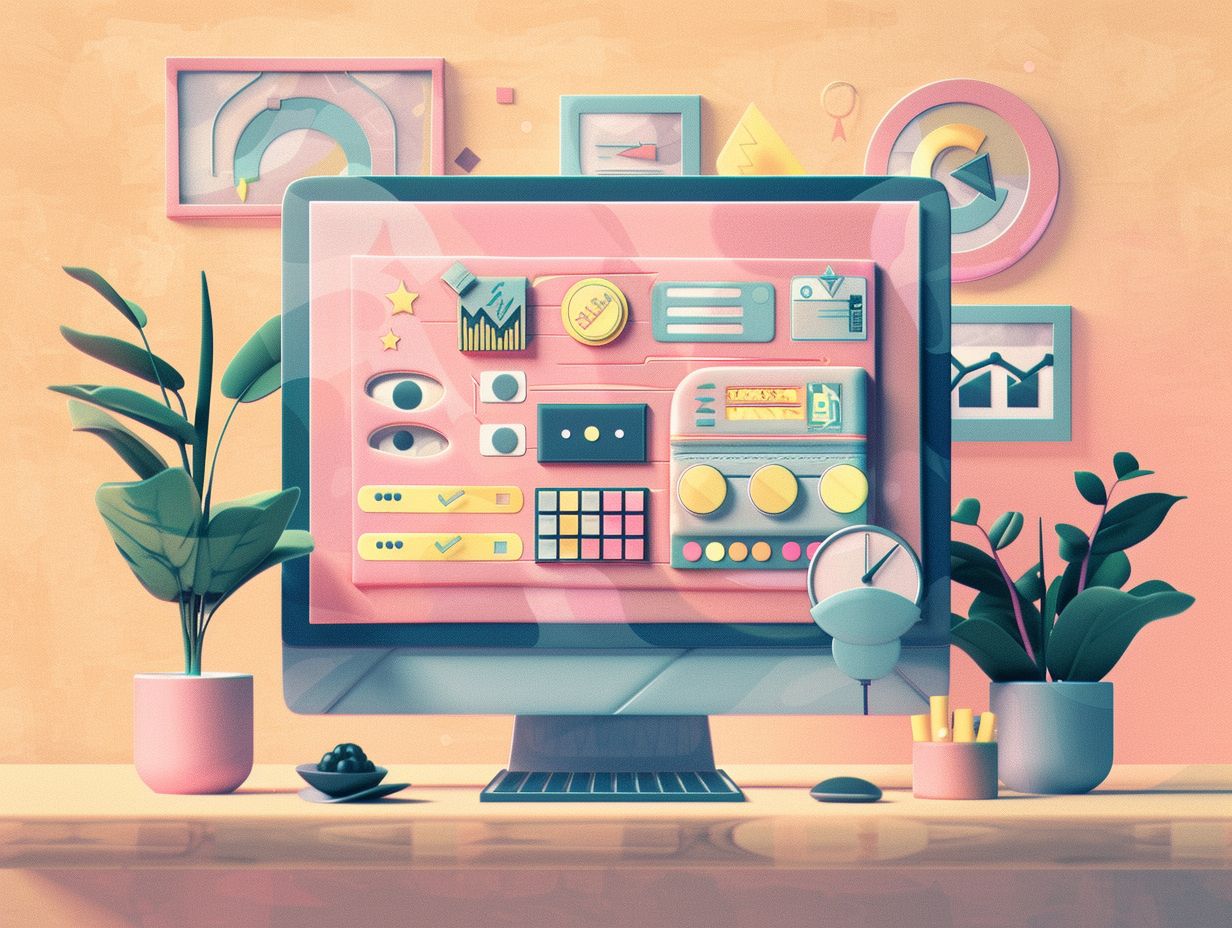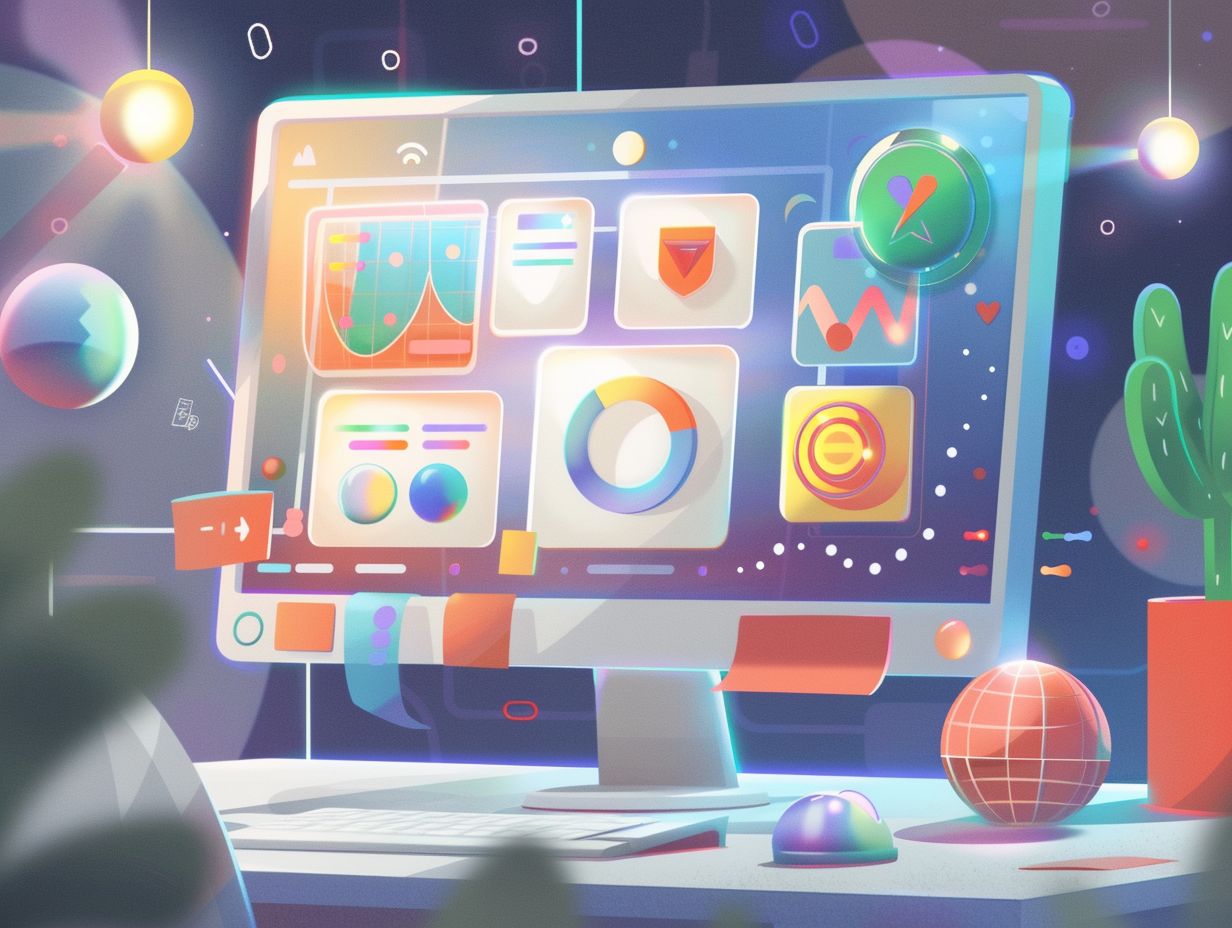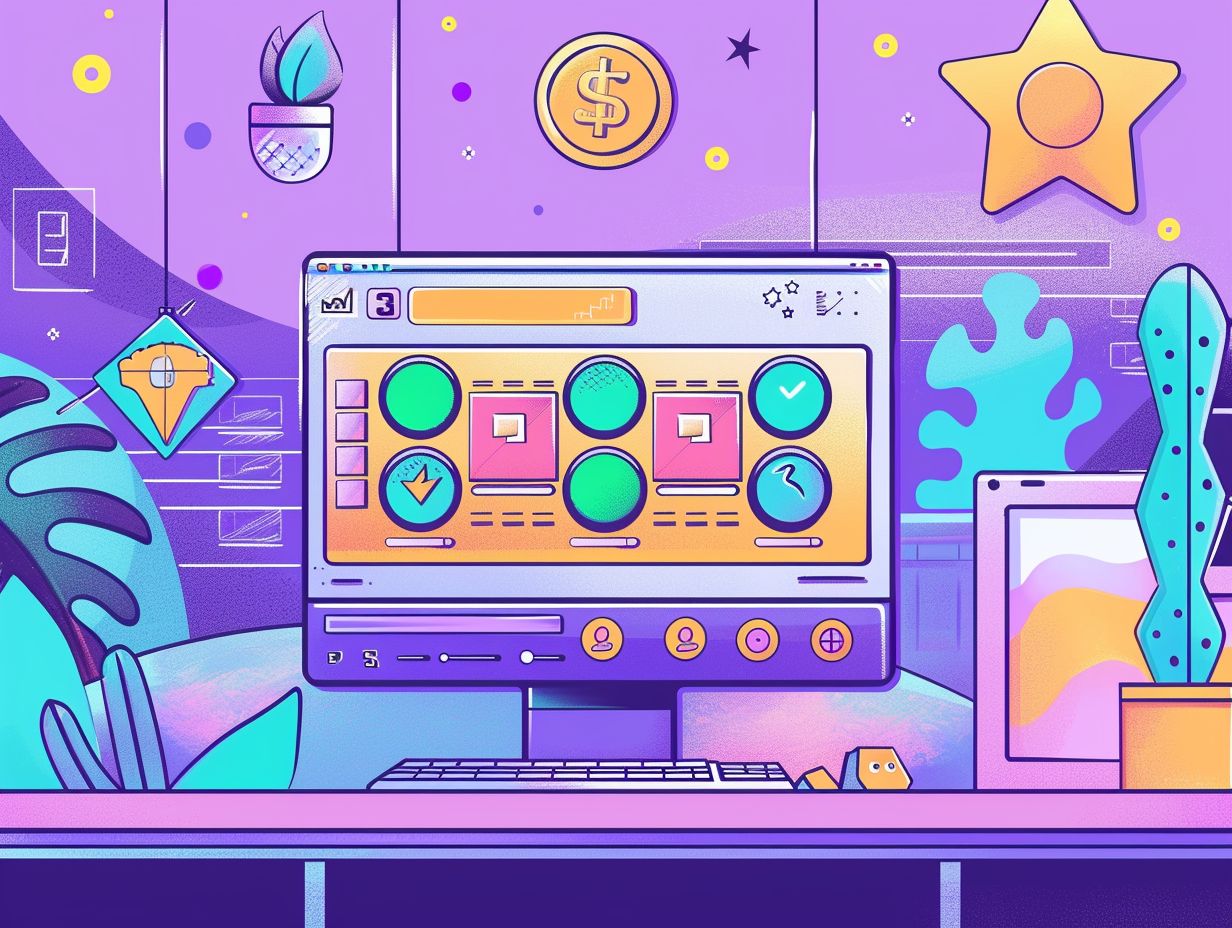If you are seeking to enhance your technical e-learning courses, gamification could be the answer you are looking for.
This article will examine the realm of gamification and its advantages, investigate the challenges and prospects it offers in technical e-learning, and analyze the essential elements of integrating gamification into your courses.
From game mechanics and design principles to detailed instructions for implementation, all aspects will be addressed.
You will gain insights into measuring the impact of gamification and uncover top strategies for developing compelling and impactful gamified courses.
Key Takeaways:

Defining Gamification and its Benefits
Gamification in eLearning refers to your integration of game mechanics and design principles into educational content to enhance engagement and motivation among your students. The benefits of this approach include increased student participation, improved learning outcomes, and a sense of achievement and progress.
Engaging your students through gamified elements such as points, leaderboards, and badges creates an immersive learning environment that captures their interest and encourages active participation. By tapping into intrinsic motivators like competition and rewards, eLearning gamification not only makes learning enjoyable but also enhances retention and knowledge acquisition.
Tailored feedback in gamified eLearning modules allows you to track your progress and performance, fostering a growth mindset and a continual desire to improve. Gamification transforms traditional learning experiences into dynamic, interactive journeys that enable you to learn in a more enjoyable and effective manner.
Understanding the Technical E-Learning Landscape
In the technical eLearning landscape, you will encounter a diverse array of online platforms, tools, and resources specifically crafted to deliver educational content to students in a digital format. Notably, platforms such as Khan Academy have played a pivotal role in transforming online learning by offering complimentary access to an extensive selection of courses and interactive materials.
Challenges and Opportunities for Gamification
While implementing gamification in eLearning, you may encounter challenges such as designing progress tracking systems that effectively align with learning objectives and maintaining student interest consistently. These obstacles create opportunities for innovation and creativity in improving the gamified learning experience.
One of the key challenges in integrating gamification into eLearning is ensuring that progress tracking mechanisms are in sync with learning goals and offer valuable feedback to learners. Additionally, sustaining high levels of engagement poses another obstacle, as initial excitement may diminish over time. Despite these difficulties, the fusion of game elements and educational content in gamification holds the potential to transform traditional learning approaches.
Educators can overcome these challenges by utilizing technology and data analytics to customize gamified experiences based on individual learning preferences. This approach fosters a more personalized and efficient learning environment.
Key Elements of Gamification in Technical E-Learning

The crucial components of gamification in technical eLearning involve utilizing badges to acknowledge achievements, employing storytelling techniques to captivate learners, and implementing point systems to monitor progress and encourage engagement. These elements synergize to establish an engaging and interactive learning atmosphere.
Game Mechanics and Design Principles
Game mechanics and design principles in gamification involve personalization to cater to individual learning styles, the introduction of challenges to promote skill development, and the incorporation of interactive elements that enhance user engagement. These aspects contribute to the overall effectiveness of gamified learning experiences.
Personalization is a key component in eLearning as it allows learners to have a tailored experience that suits their unique preferences and needs. By presenting content in a way that resonates with each individual, you are more likely to stay motivated and engaged throughout the learning process.
Challenges provide opportunities for you to test your knowledge and skills, pushing you to overcome obstacles and achieve goals. Interactivity further enhances the learning experience by allowing you to actively participate, making your learning journey more dynamic and immersive.
Implementing Gamification in Technical E-Learning
Incorporating gamification into technical eLearning necessitates integrating interactive elements and collaborative activities to cultivate a dynamic and engaging learning environment. By incorporating gamified features, educators can enhance student participation and improve knowledge retention.
Step-by-Step Guide for Integration
- A step-by-step guide to integrating gamification in technical eLearning involves setting up timers to create a sense of urgency, designing challenges that promote active learning, and incorporating feedback mechanisms to track student progress and performance.
- Each stage of integration plays a critical role in maximizing the benefits of gamified learning.
Timers serve as a valuable tool by introducing time pressure, which increases learner engagement and encourages efficient task completion. Challenges need to be meticulously curated to align with learning objectives, promoting critical thinking and problem-solving skills.
Feedback mechanisms offer students immediate feedback and insight into their strengths and areas for improvement, fostering a growth mindset and continuous learning. By strategically combining these elements, educators can establish a dynamic and interactive eLearning environment that captivates learners and enhances knowledge retention.
Measuring the Effectiveness of Gamification

To measure the effectiveness of gamification in technical eLearning, you need to track progress through interactive elements, assess student engagement levels, and analyze performance data. This analysis allows you to evaluate the impact of gamified strategies on learning outcomes, providing valuable insights into the success of gamification implementations.
Evaluating Learning Outcomes and User Engagement
When evaluating learning outcomes and user engagement in gamified technical eLearning, you need to analyze student performance data, gather feedback on the learning experience, and pinpoint challenges that affect engagement levels. Through this assessment, educators can refine gamification strategies to achieve better results.
The evaluation process is crucial for understanding how effectively the gamified eLearning content is being delivered and received by users. By analyzing data, educators can monitor student progress, identify areas for improvement, and customize the learning experience to meet individual needs. Gathering direct feedback from learners offers valuable insights into their preferences, encountered challenges, and overall satisfaction levels with the gamified approach. Overcoming engagement challenges requires the creation of interactive and immersive experiences that keep users motivated and focused on accomplishing learning objectives.
Best Practices for Gamification in Technical E-Learning
Incorporate role-playing scenarios into your technical eLearning courses to enhance experiential learning. Implement effective progress tracking mechanisms and provide personalized feedback to learners. By following these best practices, you can create engaging and effective gamified courses.
Tips for Creating Engaging and Effective Gamified Courses
When creating gamified courses, you should focus on designing challenging tasks that align with learning objectives, providing immediate feedback to learners, and incorporating elements of competition to boost motivation. These strategies can assist educators in delivering engaging and effective learning experiences through gamification.
By integrating challenge-based tasks into the course structure, you can create a dynamic learning environment that promotes active participation and critical thinking. Immediate feedback mechanisms, such as detailed explanations or progress indicators, play a crucial role in guiding learners towards mastery. Introducing competitive elements, like leaderboards or rewards for achievement, can stimulate healthy competition and enhance learners’ sense of accomplishment and satisfaction. Effectively balancing these components can greatly enhance instructional design and overall learner engagement.
Frequently Asked Questions

What are Gamification Strategies for Technical E-Learning Courses?
Gamification strategies are techniques used to incorporate game elements and mechanics into technical e-learning courses to increase learner engagement, motivation, and retention of information.
What are some examples of Gamification Strategies for Technical E-Learning Courses?
Some examples of gamification strategies include incorporating points, levels, leaderboards, badges, challenges, and rewards into the e-learning course to make it more interactive and engaging for learners.
How can Gamification Strategies benefit Technical E-Learning Courses?
Gamification strategies can benefit technical e-learning courses by increasing learner engagement and motivation, making the learning process more enjoyable and interactive, and improving information retention and application.
What factors should be considered when implementing Gamification Strategies in Technical E-Learning Courses?
When implementing gamification strategies, it is important to consider the target audience, learning objectives, course content, and the balance of game elements to ensure they align with the course goals and enhance the learning experience.
What are some challenges in incorporating Gamification Strategies in Technical E-Learning Courses?
Some challenges in incorporating gamification strategies in technical e-learning courses may include the need for proper planning and design, potential distractions from the learning objectives, and the risk of overcomplicating the course with excessive game elements.
Are there any potential drawbacks to using Gamification Strategies in Technical E-Learning Courses?
While gamification strategies can enhance the learning experience, it is important to keep in mind that they may not be suitable for all learners and can become a distraction if not implemented properly. It is important to consider the individual needs and learning styles of the target audience before incorporating gamification into the course.
